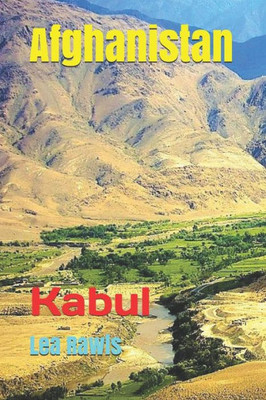
Afghanistan: Kabul (Photo Book)
Independently published
ISBN13:
9781791850067
$19.23
Afghanistan is a landlocked country with estimated population at at 29.2 million in 2017.Human habitation in Afghanistan dates back to the Middle Paleolithic Era, and the country's strategic location along the Silk Road connected it to the cultures of the Middle East and other parts of Asia. The land has historically been home to various peoples and has witnessed numerous military campaigns, including those by Alexander the Great, Mauryas, Muslim Arabs, Mongols, British, Soviets, and since 2001 by the United States with NATO-allied countries. It has been called "unconquerable"" and nicknamed the "graveyard of empires." The land also served as the source from which the Kushans, Hephthalites, Samanids, Saffarids, Ghaznavids, Ghorids, Khaljis, Mughals, Hotaks, Durranis, and others have risen to form major empires. The political history of the modern state of Afghanistan began with the Hotak and Durrani dynasties in the 18th century. In the late 19th century, Afghanistan became a buffer state in the "Great Game" between British India and the Russian Empire. By 1996 most of Afghanistan was captured by the Islamic fundamentalist group the Taliban, who ruled most of the country as a totalitarian regime for over five years. The Taliban were forcibly removed by the NATO-led coalition, and a new democratically-elected government political structure was formed.Afghanistan is a unitary presidential Islamic republic with a population of 31 million, mostly composed of ethnic Pashtuns, Tajiks, Hazaras and Uzbeks. It is a member of the United Nations, the Organisation of Islamic Cooperation, the Group of 77, the Economic Cooperation Organization, and the Non-Aligned Movement. Afghanistan's economy is the world's 108th largest, with a GDP of $64.08 billion; the country fares much worse in terms of per-capita GDP (PPP), ranking 167th out of 186 countries in a 2016 report from the International Monetary Fund.Michael E. O'Hanlon of the Brookings Institution estimated that if Afghanistan generates about $10 billion per year from its mineral deposits, its gross national product would double and provide long-term funding for Afghan security forces and other critical needs. The United States Geological Survey (USGS) estimated in 2006 that northern Afghanistan has an average 2.9 billion (bn) barrels (bbl) of crude oil, 15.7 trillion cubic feet (440 bn m3) of natural gas, and 562 million bbl of natural gas liquids.[ In 2011, Afghanistan signed an oil exploration contract with China National Petroleum Corporation (CNPC) for the development of three oil fields along the Amu Darya river in the north. The country has significant amounts of lithium, copper, gold, coal, iron ore, and other minerals. The Khanashin carbonatite in Helmand Province contains 1,000,000 metric tons (1,100,000 short tons) of rare earth elements. In 2007, a 30-year lease was granted for the Aynak copper mine to the China Metallurgical Group for $3 billion, making it the biggest foreign investment and private business venture in Afghanistan's history. The state-run Steel Authority of India won the mining rights to develop the huge Hajigak iron ore deposit in central Afghanistan. Government officials estimate that 30% of the country's untapped mineral deposits are worth at least $1 trillion. One official asserted that "this will become the backbone of the Afghan economy" and a Pentagon memo stated that Afghanistan could become the "Saudi Arabia of lithium." In a 2011 news story, the CSM reported, "The United States and other Western nations that have borne the brunt of the cost of the Afghan war have been conspicuously absent from the bidding process on Afghanistan's mineral deposits, leaving it mostly to regional powers."
- | Author: Lea Rawls
- | Publisher: Independently published
- | Publication Date: Dec 17, 2018
- | Number of Pages: 81 pages
- | Language: English
- | Binding: Paperback
- | ISBN-10: 1791850065
- | ISBN-13: 9781791850067
- Author:
- Lea Rawls
- Publisher:
- Independently published
- Publication Date:
- Dec 17, 2018
- Number of pages:
- 81 pages
- Language:
- English
- Binding:
- Paperback
- ISBN-10:
- 1791850065
- ISBN-13:
- 9781791850067





